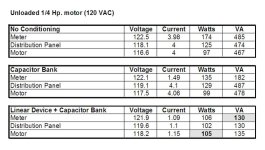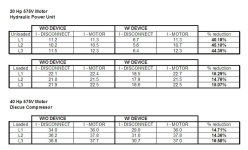Not necessarily a PLC question, but it certainly applies to power management systems...
Has anyone worked in a facility where their power conditioning devices have been installed? I witnessed a demonstration last week where power consumption (VA)to a 1/4 Hp motor was reduced from 485VA to 130VA (at the meter) by simply connecting what they call a "linear" device in parallel with the load. There was an immediate reduction in the heat dissipation from the motor (it was running around 120F before the device was brought on-line and quickly dropped to under 90F and was still dropping when the demonstration ended).
If someone had presented this data to me, I would have handed it back and told him not to waste my time, but it's tough to argue with an actual demonstration.
Has anyone worked in a facility where their power conditioning devices have been installed? I witnessed a demonstration last week where power consumption (VA)to a 1/4 Hp motor was reduced from 485VA to 130VA (at the meter) by simply connecting what they call a "linear" device in parallel with the load. There was an immediate reduction in the heat dissipation from the motor (it was running around 120F before the device was brought on-line and quickly dropped to under 90F and was still dropping when the demonstration ended).
If someone had presented this data to me, I would have handed it back and told him not to waste my time, but it's tough to argue with an actual demonstration.
Last edited:





